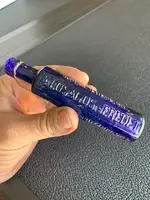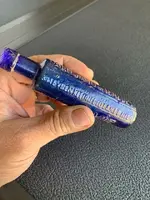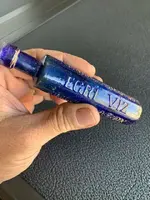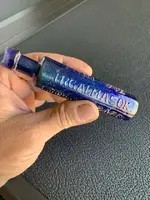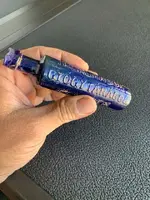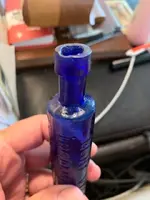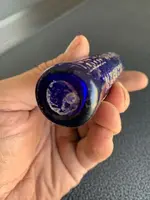Imperium - Egri víz
At the beginning of the twentieth century, many people today ask: What is this drink?
Older people may still remember it as in the past, available for a drink specialty in the 1960's and 1970's, but the younger ones are completely clueless when they encounter it. What exactly is this drink?
What is Eger Water?
Brandy? Eger Water is not brandy. It is not made of mash, it is not made of fruit, it is not made by fermentation.
Water? It is not water, because if we read its ingredients , the archival quote from the 1700's, we can see that even our Ancestors strictly distinguished one type of Eger Water from the other Eger Water, since " good Eger water is only born in the pharmacy "!
Holy water? It is not holy water, as it was used as a medicine by healing monks for certain ailments and was not part of church ordinances.
A miracle cure for monks? Yes! It was considered a panacea. It has been used for all kinds of diseases and diseases. Both externally and internally. The drug was originally made to a concentration of 70 degrees alcohol. Externally e.g. to rub varicose feet, treat scalp in case of hair loss, etc. It was used. However, when used internally, it has been doubled and consumed: from colds and respiratory diseases, to the treatment of joint diseases, to indigestion. As the old verse says, "a lazy stomach is yeast, and a full stomach helper!" It was also considered a real heart booster and even in the XIX. It was also registered as a medicine specialty in the second half of the 19th century.
Pharmaceutical? Yes. After all, it has been used as a medicine for centuries. This drink no longer meets the concept and criteria of medicine in today's sense. According to many, we can simply speak of a medicinal product if it is actually produced under pharmacy conditions.
"Bona Agriensis aqua, Officina sola nata" = "The good Eger Water only born (only) pharmacy (is)"
I could say what the original, another Hungaricum, in brandy is often say:
"The Eger Water in small quantities consumed drugs , and in large quantities it is a remedy (for mental illness)."
After that, the Eger Water in the XVIII. By the end of the twentieth century, the Monarchy had become a well-known medicine throughout. Initially, it reached all parts of the world through the pharmacies of the Jesuit monks and then of the Order of Mercy. As a well-known medicine, the Merciful even exported it to the American continent in the nineteenth century. at the beginning of the century. Contributing to its spread was the fact that the majority of patients, with their illness, did not turn to a doctor but directly to a pharmacist for recovery. How was this contemporary medicine given? It was administered in drops or with a small spoon. Take 30-60 drops at a time, or consume a teaspoon diluted in well water every hour until the pain is relieved, or in case of toothache, "put a tablespoon in your mouth and keep it in it until you can stand it". In case of travel sickness or as a precautionary measure, 40-60 drops of sugar should be swallowed. The Friends of the Order of Mercy of Eger brought home a gold medal, a cross of merit and a letter of commendation for the 1904 exhibition in Vienna. At the national exhibition in Pécs in 1907, the Eger Pomegranate Pharmacy won a silver medal. These letters of commendation, according to a scientific publication, were last exhibited in the room of the chief pharmacist of János Tóth in his room in the 1960's.
At the beginning of the 19th century, however, three pharmacies made Eger Water in the city.'This gave rise to litigation. A decree of the Minister of the Interior dated 4 October 1904 sought to bring order to the chaotic situation. It authorized the marketing of a "medicinal specialty" only if the main ingredients were indicated on the bottle, and granted the right to manufacture the drink, the exclusive right to manufacture it, to the Pomegranate Pharmacy of the Order of Mercy. Many details of the litigation have not been clarified. For example, it also became questionable whether the Jesuit monk James Neussel really stood in the hospital at all during treatment.
After World War II, after the nationalization of the Eger Merciful Hospital in the 1960's, the Heves County Distillery Company produced a product called Eger Water. After its merger into the Eger-Mátravidék Wine Farm, and then not until the change of regime, its production continued. The Eger water they made was not made according to the original recipe, despite the fact that the method of production was handed over to the Heves County Distillery Company by the chief pharmacist of Eger County, János Tóth. It was not made using pure alcohol, but made on the basis of apple brandy and not exactly what herbs were made.
The work and experimental diligence of the chief pharmacist already mentioned contributed to the production of the product of the 1970s. In the wine cellar, the guests were first cheered up with a heap of Eger water, and then, after a tasty snack, they started tasting the excellent Eger wines. In the privatization process following the change of regime, another Ltd. produced this drink for a temporary period, and then went bankrupt. The trademark registration for the product has expired, which was then acquired by "Imperium Aqua" Egészségügyi Szolgáltató és Kereskedelmi Kft.
Unfortunately, the Hospital of Mercy in Eger, its historical part today looks like this (see below) next to the Minaret. The Chapel of the Merciful Order warehouse, the dining room of the Monks, has not been completely restored either. A board painted and restored on wood with pictures would be a real European sensation. The renovation of the former Pomegranate Pharmacy is also waiting for money, possibly for a well-meaning investor.
For those who like to taste the Eger Water, let me finish with a little information.
Due to the many herbs and spices, it is a drink with a very strong aroma and a characteristic aroma. Anyone who has tasted it once and understands its scent will never forget it - it has a characteristic "Eger Water" scent! Many times only herbal and herbal expert housewives who can use herbs can highlight a herb when tasting based on its characteristics.
Dr. Péter Tóth-Daru
